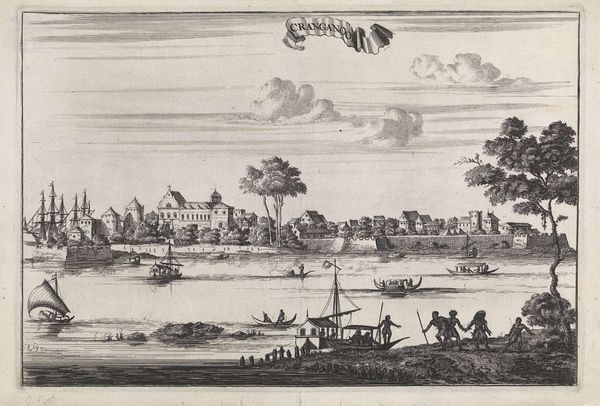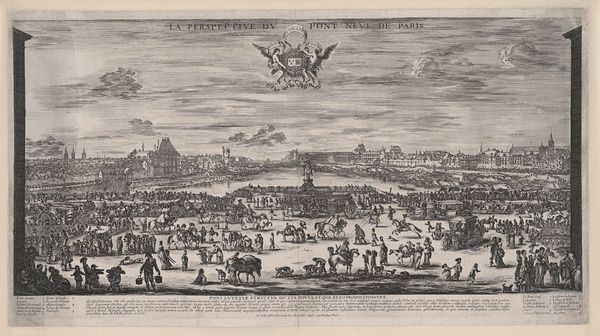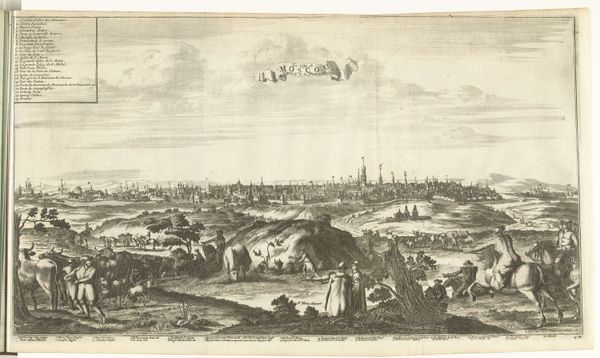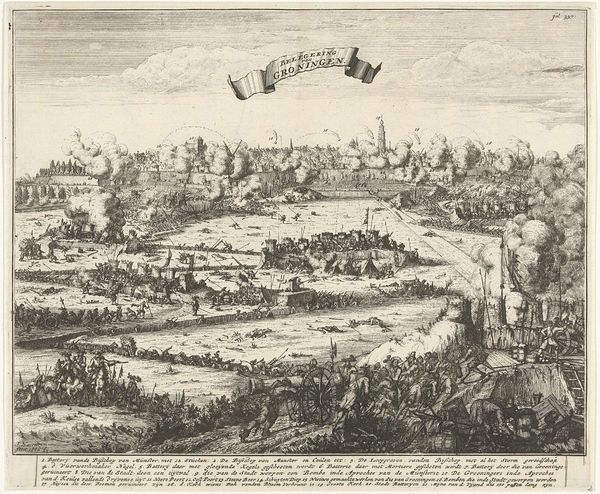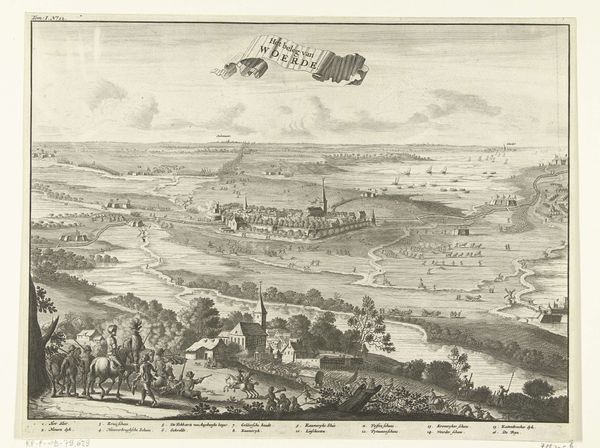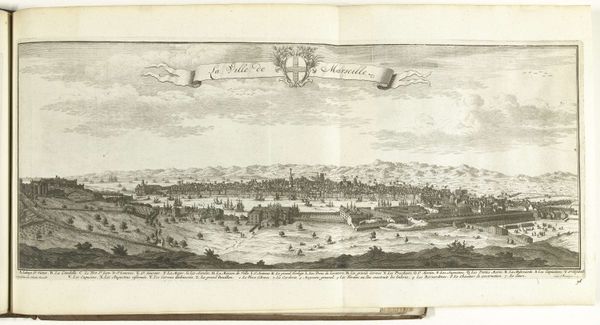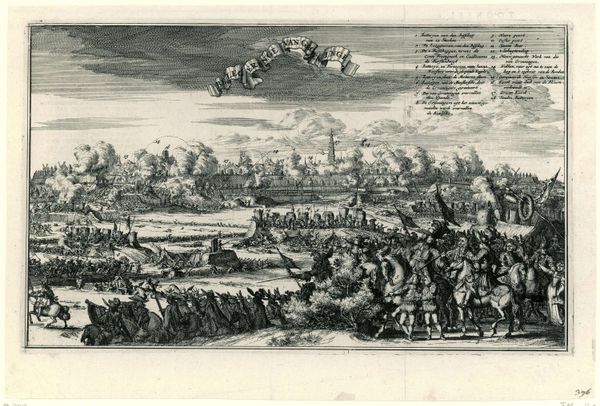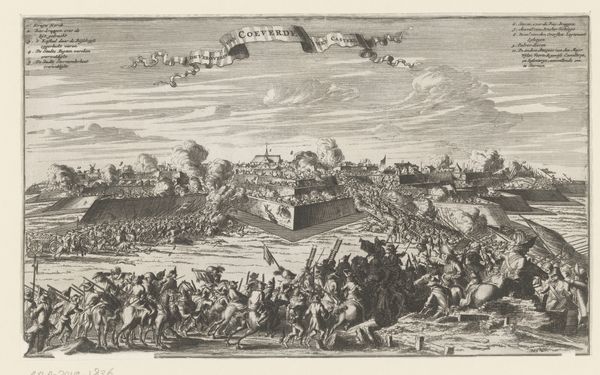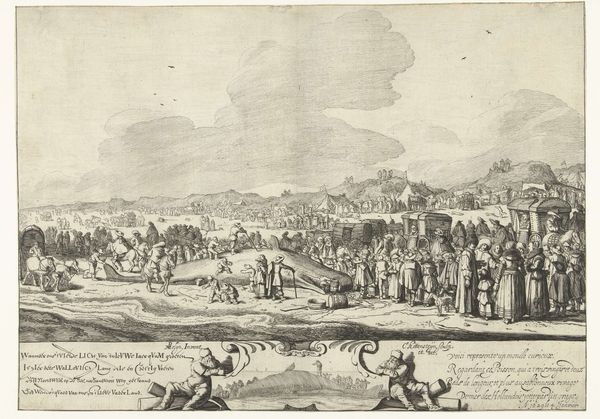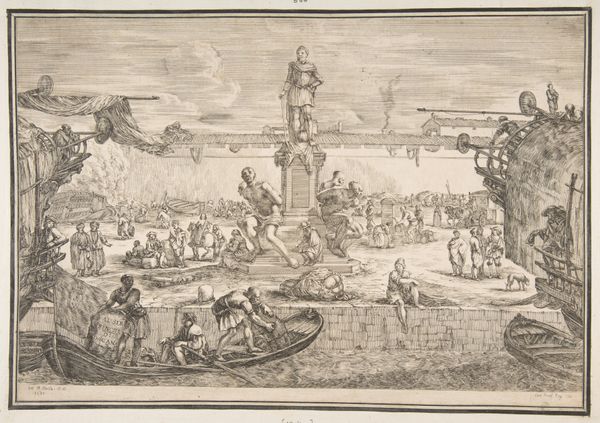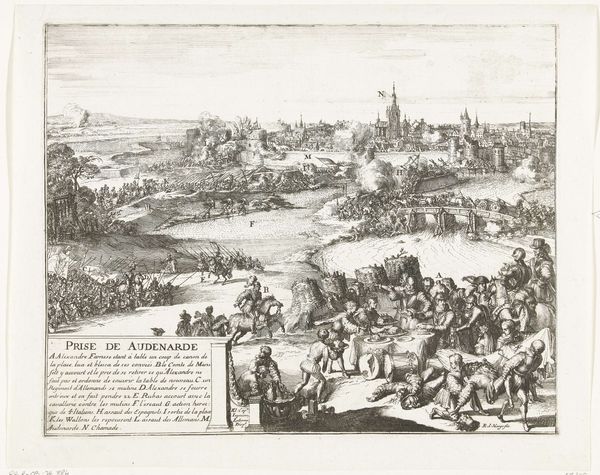
print, engraving
#
dutch-golden-age
# print
#
asian-art
#
old engraving style
#
landscape
#
cityscape
#
engraving
Dimensions: height 196 mm, width 285 mm
Copyright: Rijks Museum: Open Domain
Curator: Here we have "View of the City of Arakan," an engraving from 1676 by Coenraet Decker, found in the Rijksmuseum. Editor: My first impression is a blend of exoticism and a touch of foreboding; the detail in the engraving renders a landscape both lively and somehow constrained by the exacting lines. Curator: Exactly. Decker situates us within the colonial gaze of the Dutch Golden Age. What appears at first glance to be a benign cityscape quickly reveals the intersection of trade, power, and cultural exchange, all fraught with the realities of colonial ambition. Editor: I see that ambition so clearly articulated through the material choices—the precision of the engraving, replicated for widespread dissemination. The labor behind each line, and then each print made from it, underscores the commercial machine that facilitated these colonial exploits. How were these prints used? Curator: These images served many purposes: from bolstering support for overseas ventures to documenting and classifying the ‘new world’. But it's also crucial to consider the communities depicted here; what was life actually like in Arakan during this period, under increased outside influence? What was lost or changed? Editor: Absolutely. And it's fascinating to think about the material ingredients: the metal, the ink, the paper – each one representing a network of global exchange that directly connects back to resources extracted from colonized lands and labor. Curator: It calls attention to whose narratives are privileged. The seemingly objective rendering of the city is actually a construction. By exploring the symbolism and subtle gestures within the artwork, we begin to unveil a far more complex socio-political framework, with inherent biases relating to power and place. Editor: It makes me wonder about the intended audience, and about the skilled craftspeople whose knowledge made it possible to depict this city so far away. The image itself is a commodity circulating within the marketplace, both celebrating and perpetuating colonial infrastructure. Curator: Right, we have to analyze these images through the lens of post-colonial theory. Looking beyond the surface, to grapple with issues of identity, representation, and historical narrative. Editor: Examining how material choices are never neutral—they communicate values, intention and historical conditions just as powerfully as the image itself. Curator: The next time we encounter art such as this, perhaps we might be better positioned to dismantle its claims of neutrality and question the hands that shaped it. Editor: Perhaps so! Looking at art with an eye for process helps uncover whose labor mattered and to what end.
Comments
No comments
Be the first to comment and join the conversation on the ultimate creative platform.

